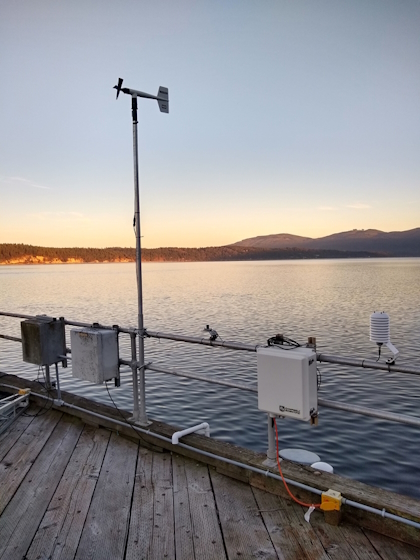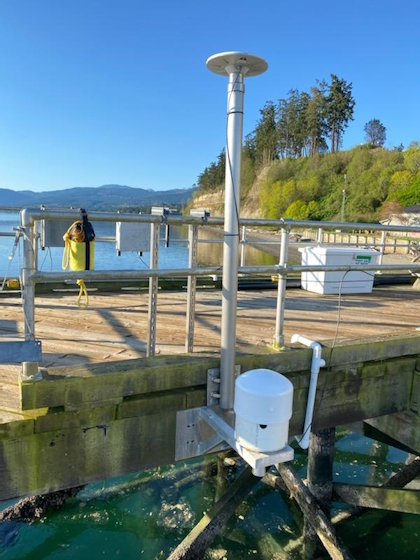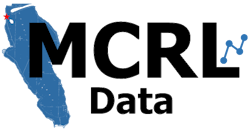Marine and Coastal Research Laboratory Data (MCRLdata)
Sequim Bay, WA is a small inlet-bay located on the Olympic Peninsula by the Strait of Juan de Fuca, a major strait connecting the Salish Sea to the Puget Ocean. At the entrance to Sequim Bay lies the Pacific Northwest National Laboratory - Sequim campus, the only marine laboratory belonging to the U.S. Department of Energy. This website describes active monitoring and numerical modeling efforts to support coastal research projects, guide operations, and characterize long-term environmental trends in Sequim Bay.
MCRLdata Monitoring
A marine environmental monitoring network was installed in 2021 off the PNNL-Sequim pier. Nearly a dozen scientific-grade instruments are continuously deployed, following regular maintenance and recalibration schedules. The following instruments are currently deployed:
- Tide gauge - measures water heights (with a co-located GNSS receiver)
- Hydrophone - measures underwater sound
- Acoustic Doppler current profiler (ADCP) - measures water currents through the channel
- Photosynthetically Active Radiation (PAR) - measures light that supports photosynthesis as it diffuses through the water
- Wind station - multiple sensors that measure wind speed and direction, temperature, humidity, barometric pressure, rainfall, CO2, and light.
- Water quality - multiple sensors that measure water temperature, salinity, dissolved oxygen, pH, nitrate, pCO2, chlorophyll, colored dissolved organic matter, and phycoerythrin
Collected data is sent to the cloud every 15 minutes and undergoes automatic quality control checks and data standardization using the TSDAT pipeline. All data collected is made available to the public. The data dashboards show data collected in the last two weeks, while longer datasets are available upon request by emailing mcrldata@pnnl.gov.
Sequim Bay Operational Forecast System (SBOFS)
The Sequim Bay Operational Forecast System (SBOFS) is a high-resolution numerical model that automatically runs daily on a supercomputer to generate a three-day forecast of water levels, currents, salinity, and temperatures. While other models exist of waterbodies in the Salish Sea, this is the highest-resolution model specifically developed for Sequim Bay.
Model results are compared with collected data from MCRLdata Monitoring network to verify model accuracy and identify potentially failing instruments. While monitoring creates understanding of a specific area, modeling essentially fills in gaps to aid in understanding of the entire bay. Results from SBOFS are available upon request by emailing mcrldata@pnnl.gov.
Funding Support
Funding to support the monitoring and modeling efforts has been provided by the Pacific Northwest National Laboratory, the U.S. Department of Energy's Water Power Technologies Office, and the Washington State Department of Commerce.




